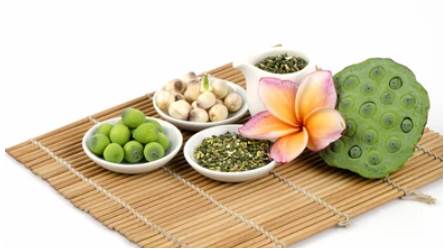
Liensinine is a bis benzyl tetrahydroisoquinoline alkaloid found in the embryo of the lotus seed of the water lily family, which is a commonly used Chinese herb. It has antihypertensive and antiarrhythmic effects, blocking adrenal α-receptors and inhibiting intracellular calcium release. Botanical analysis of plants rich in liensinine can determine the distribution of plant resources, growth environmental requirements, and adaptive characteristics of liensinine. This helps to guide the rational development and utilization of the botanical resources of liensinine and promotes pharmaceutical research and natural product development.
In order to accurately analyze and determine the content of liensinine, our research team has developed several analytical methods. High-performance liquid chromatography (HPLC) is one of the most used methods for the separation and quantitative determination of liensinine. Typically, a reversed-phase column and a UV detector are used for the analysis. In addition, Liquid Chromatography-Mass Spectrometry (LC-MS) has been widely used in the qualitative and quantitative analysis of liensinine, which improves the sensitivity and selectivity of the analysis.
For complex sample matrices, sample preparation may be required to extract and purify liensinine. Sample preparation services may include steps such as sample extraction, sample pretreatment, and solid phase extraction to obtain samples suitable for analysis.
The quantitative analysis service is designed to determine the amount of liensinine in a sample accurately. By using HPLC or LC-MS, the concentration of liensinine in a sample can be quantitatively analyzed, and a quantitative report can be generated.
Precisely weigh the dry to the constant weight of liensinine, and add methanol to make 0.1 mg, 0.01 mg, and 0.04 mg per milliliter of solution as a control solution.
Precision weighing of the sample to be tested, placed in a 100 mL measuring flask, add methanol cold immersion 12h after ultrasonic extraction for 45min, placed on the supernatant of 5mL, diluted to 10mL with mobile phase, shaking well, as a sample solution.
Pipette 20μL each of sample solutions and control solution accurately, inject the sample, and calculate the content.
Qualitative analysis is used to confirm the presence or absence of liensinine in the sample. Usually using LC-MS or NMR, the sample is analyzed to confirm the presence of liensinine, and a qualitative analysis report is provided.
By using HPLC or LC-MS, we can detect and identify impurities in the sample to ensure the purity and quality of liensinine products.
For specific sample types or analytical requirements, method development and validation can be performed to ensure the accurate analysis of liensinine. This service involves optimizing the parameter settings of the analytical method, selecting the appropriate analytical instrument and assay, and performing method validation to ensure the accuracy and reliability of the results.
If you are interested in our services, please feel free to contact us.
Lifeasible has established a one-stop service platform for plants. In addition to obtaining customized solutions for plant genetic engineering, customers can also conduct follow-up analysis and research on plants through our analysis platform. The analytical services we provide include but are not limited to the following:
Get Latest Lifeasible News and Updates Directly to Your Inbox
Adaptive Evolutionary Mechanism of Plants
February 28, 2025
Unraveling Cotton Development: Insights from Multi-Omics Studies
February 27, 2025